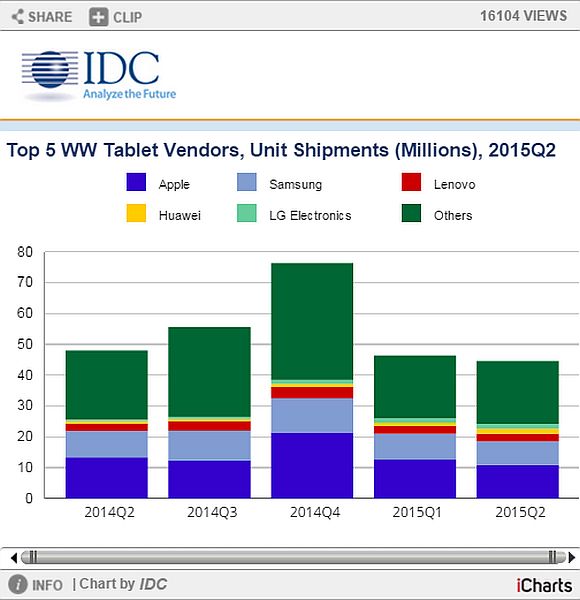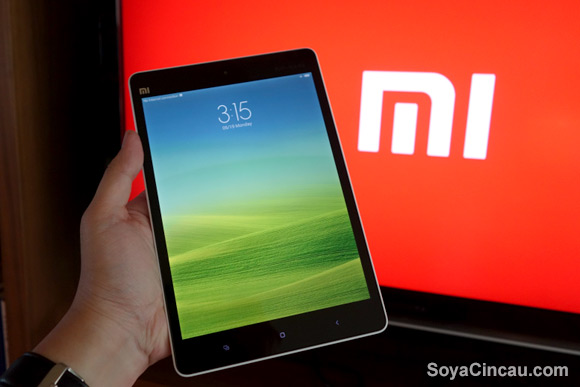With Q2 in the books, market trends of the portable-friendly tablet continues to decline. The figures for this year stand at a downward 7% based on yearly figures, accounting for 44.7 million tablets worldwide. Possibly, hampered by the rise of other manufacturers that have successfully played catch-up.
Front-runners, Apple and Samsung are seeing less of the overall market, from 45% of majority during the first quarter of the year, eventually dropping a combined 41% – due to the rise of LG, Huawei and Lenovo. So why are we seeing a dip? Well for one, it could be due to a gradual lack of innovations in the hardware department – the likes of the iPad mini 2 to 3 comes to mind, as additions of the Touch ID being the only big difference and costing an incredible $100 more for only this feature.

Not only specific to Apple, Microsoft’s Surface line has had its issues in its early beginnings but after the slow start, sales seemed to pick up and allow Windows to make a 44% increase ($713 million in revenue) thanks to the Surface Pro 3. These earnings though, do not include the numbers from the Pro’s younger brother (Surface 3), which could’ve given a boost to Microsoft.
A case can be made for longer life cycles being a part of the tablet’s demise. Users are relying on their current generation tablets more, and foregoing the newer ones as they don’t bring much more to the table. That and considering the emergence of the phablet, which could seem more appealing to some to don’t quite have the budget for two devices.
Needless to say, 2-in-1s and convertibles are also paving a way into the tablet’s market share. A lot of tough competition for a device that sits at a very narrow edge of a cliff. Will we see something worth buying soon? Only time will tell.







